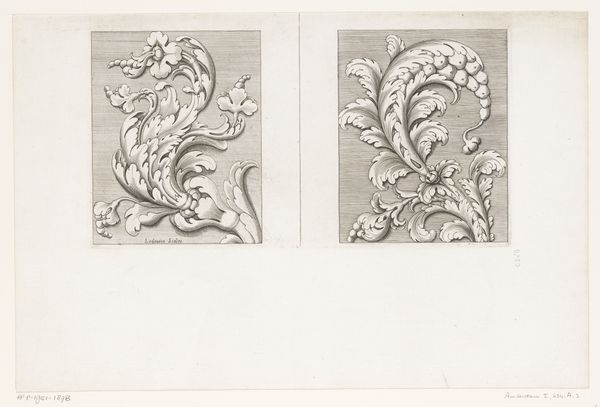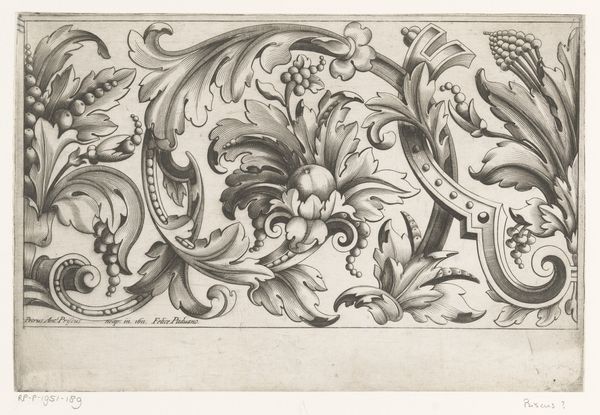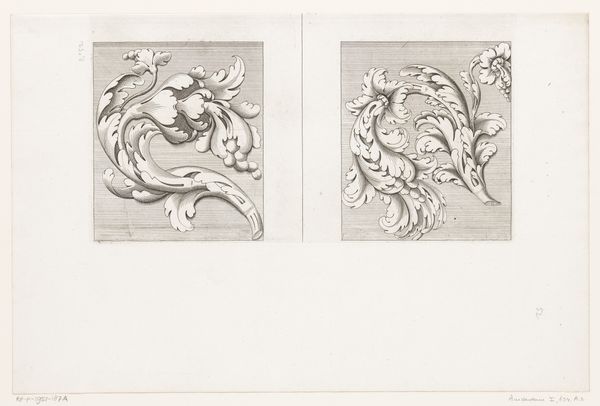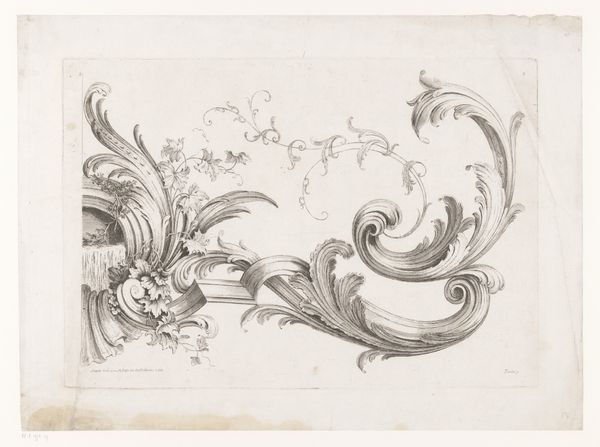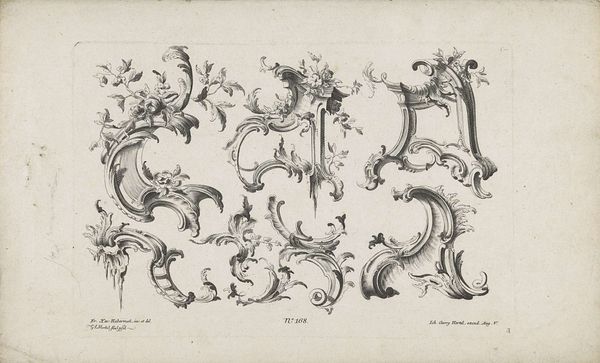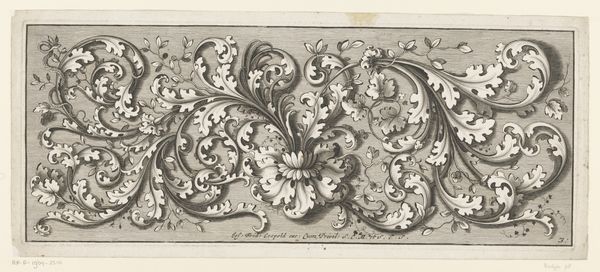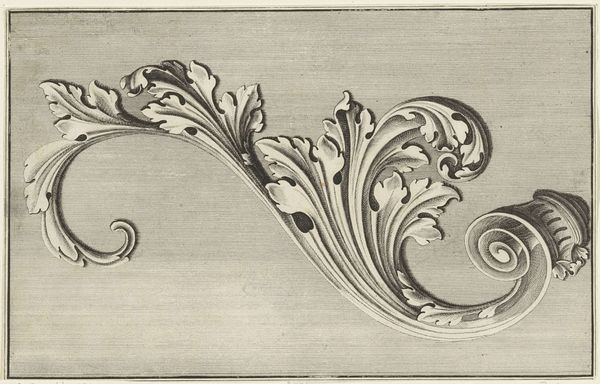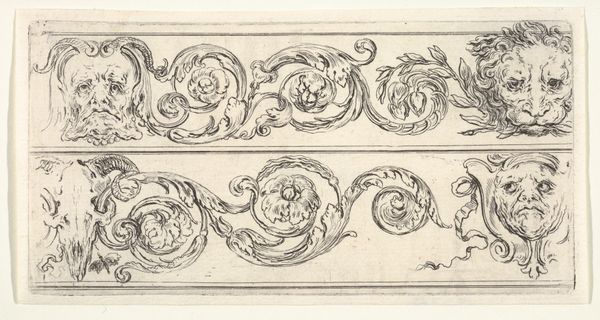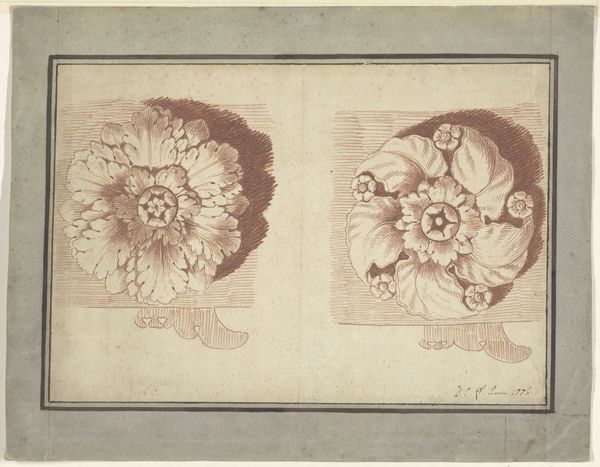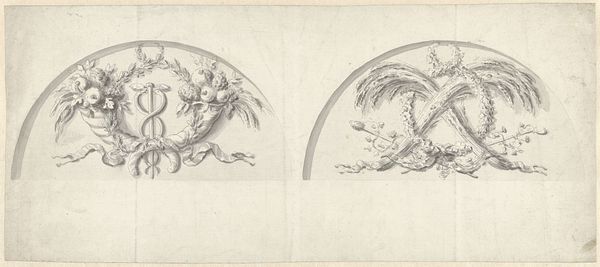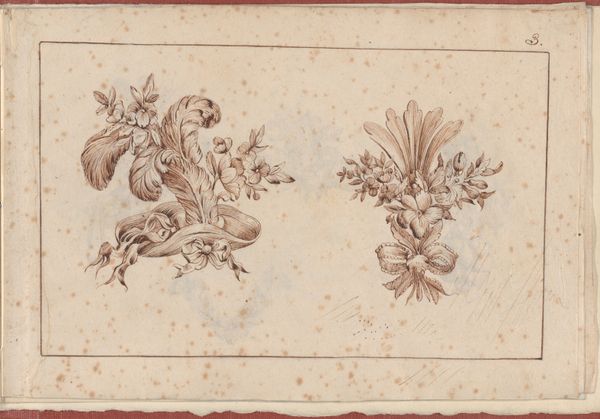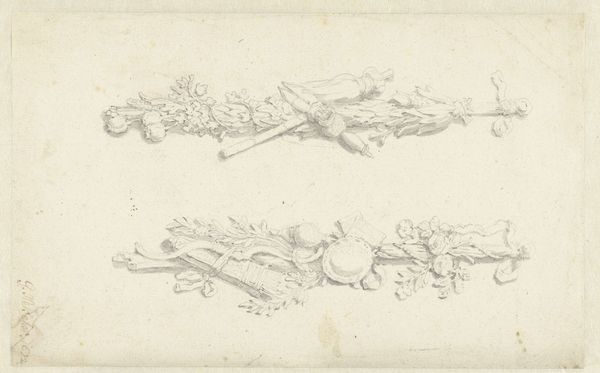
drawing, ink, pen
#
drawing
#
neoclacissism
#
toned paper
#
light pencil work
#
pen sketch
#
old engraving style
#
landscape
#
classical-realism
#
form
#
personal sketchbook
#
ink
#
ink drawing experimentation
#
pen-ink sketch
#
pen work
#
sketchbook drawing
#
pen
#
decorative-art
#
sketchbook art
Dimensions: height 202 mm, width 355 mm
Copyright: Rijks Museum: Open Domain
Editor: Here we have Bartholomeus Ziesenis's "Ontwerp voor twee decoraties in rechthoekige verdiepte vlakken," a pen and ink drawing from 1787. I'm struck by how these designs, meant for decoration, seem to reflect a very particular vision of order and control in nature. How do you interpret this work within its historical context? Curator: It’s interesting that you mention control. This piece, rooted in neoclassicism, is more than just a decorative sketch; it’s a visual assertion of power structures reflected in the social and political landscape of the late 18th century. Notice how nature is tamed, almost regimented, within those rectangular frames. What does this say about the era’s view of the natural world and its relationship to social order? Editor: I see your point. The regimented flowers almost become symbols of societal constraints, reflecting a desire for order perhaps in response to the revolutionary rumblings of the time. Was there a conscious effort to use art to promote certain values? Curator: Absolutely. Neoclassicism often served as a visual language for those in power. By evoking the perceived order and rationality of the classical world, artists like Ziesenis subtly reinforced existing hierarchies. The emphasis on clean lines and balanced compositions echoes a desire for a stable, predictable society – a direct contrast to the perceived chaos of revolution. Consider how these controlled floral arrangements might resonate differently with those excluded from the dominant power structures. Editor: That makes me think about the role of art in either reinforcing or challenging social norms. It's not just about aesthetics, but about the values being communicated. Curator: Precisely. Even a seemingly innocuous decorative sketch like this one can be read as a statement about power, control, and the relationship between humans and the natural world. The artistic choices reflected societal power dynamics and philosophical thoughts. Editor: I never would have considered that decorative art could be so deeply connected to socio-political issues! It gives a whole new dimension to appreciating the piece. Curator: Indeed. Examining the historical context reveals how even subtle artistic choices can reflect and reinforce dominant ideologies, or, potentially, offer quiet acts of resistance.
Comments
No comments
Be the first to comment and join the conversation on the ultimate creative platform.
